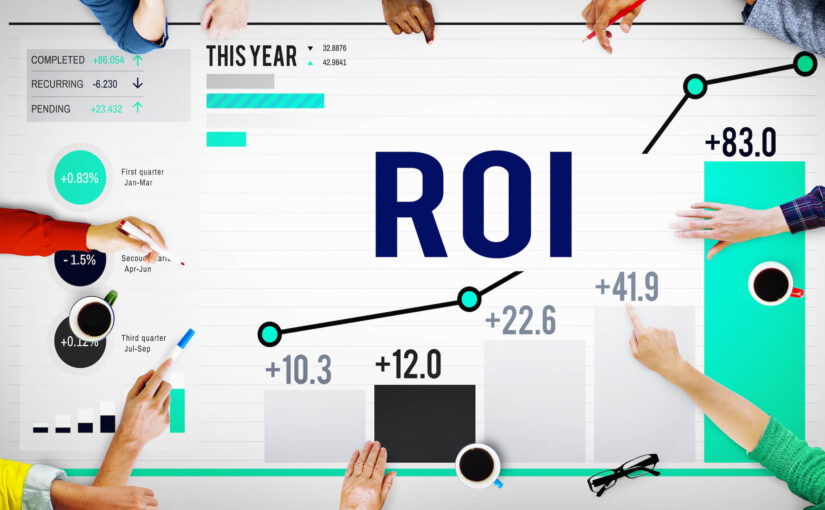Key Takeaways
-
A gold standard for hiring brings consistency, transparency and quality that fits your organization and drives success.
-
By harnessing transparent data and objective metrics, Hireology empowers companies to quantify and optimize the impact of their talent acquisition — regardless of type or industry.
-
By identifying success metrics, sourcing strategically, and evaluating candidates holistically, you make hiring inclusive, data-driven and flexible.
-
Doing the hiring right means better retention, better performance and a stronger culture.
-
Tackling implementation issues with transparency, systems thinking and team empowerment facilitates seamless adoption of new habits.
-
When quantitative data is balanced with qualitative insights and ethical standards, it can result in fair, well-rounded hiring decisions that support organizational growth.
SPQ Gold for better hires means using the SPQ Gold assessment to help find people who fit sales roles well. The tool checks for traits linked to sales success, like drive and openness.
Many companies use it to pick strong candidates and build teams who can meet goals. To choose the right test and get more from hiring, it helps to know what SPQ Gold measures and how it works in real hiring.
The Gold Standard
For us, a gold standard in hiring is establishing transparent, equitable, and efficient systems which enable companies to select the best people for every position. For global teams, this standard must function in many contexts, regardless of country or culture.
Below is a cheat sheet for the qualities that define a best-in-class hiring process.
|
Key Characteristic |
Description |
|---|---|
|
Structured Assessments |
Use of clear, job-related criteria for every role. |
|
Consistent Process |
Same steps for all candidates, reducing bias and errors. |
|
Transparency |
Open sharing of criteria, stages, and outcomes with all involved. |
|
Feedback Loops |
Regular input from candidates and hiring teams to improve each step. |
|
Measurable Outcomes |
Tracking results like retention, performance, and fit after hiring. |
|
Adaptability |
Flexibility to adjust when roles, teams, or markets change. |
When organizations leverage this gold standard, they increase the likelihood of making a good hire. It makes teams function more effectively, fosters trust, and can even boost corporate performance in the long run.
Consistency matters, too — the more teams use the same system, the more fair and predictable the process becomes.
The Concept
The Gold Standard is fairness and clarity and results. Everything has rules — from posting a job through to making an offer, it all has rational rules based on the role and business need.
It’s the kind of thinking that helps fit folks to work based on what counts. For instance, firms that use structured interviews and skills tests are frequently able to source hires who stick around longer and perform better.
This criterion aligns with high-level objectives such as expansion, organizational well-being, and compliance with the law in each nation. When leaders use these rules the same way every time, it cultivates trust both within and beyond the company.
The process is open: candidates know what to expect, and teams can explain choices clearly. This gold standard reduces bias, accelerates hiring, and reduces bottlenecks. It means that all candidates—regardless of origin—have equal opportunity.
The Calculation
The gold standard counts to follow what works. Metrics might be time to fill a job, candidate satisfaction scores, success rates of new hires 6 or 12 months on the job.
For instance, a tech company might track how effectively new employees hit skill targets after their first year, whereas a retail organization might monitor turnover rates very carefully.
The truth is data is the secret sauce. If the numbers miss, the process misses. Teams must look at their data frequently and correct for local variables, such as job market fluctuations or emerging skill requirements.
What works for a bank may not work for a hospital, so the gold standard has to flex to each industry or region.
The Purpose
The objective is to select the appropriate individuals, for the appropriate positions, at the appropriate moment. That creates better teams and more powerful results, both today and tomorrow.
A clear mission guides executives to make intelligent decisions—whether it’s time to hire quickly or to slow down or twist the procedure. Adhering to this mission establishes credibility, eliminates friction, and maintains momentum as markets change.
In time, gold standard teams tend to experience reduced turnover, enhanced morale, and increased productivity.
Achieving Gold
Hiring for gold is about more than just filling open positions. It’s about engineering a workflow that aligns with your organization’s values, convenes the right groups, and gets teams unstuck. The steps below help tie hiring to core values and real business needs:
-
List the values central to the company culture.
-
Involve key teams to define what hiring success looks like.
-
Build job descriptions with values and goals in mind.
-
Set up feedback channels for ongoing process checks.
-
Use data to track if hires meet set standards.
-
Review and adjust hiring steps as business needs change.
1. Define Success
Success, after all, is not one-size-fits-all. For certain positions it’s production and velocity, for others it’s collaboration or originality. Begin by deconstructing what a ‘great hire’ means for each role. These might be sales goals realized, client problems remedied, or projects completed. A specific set of markers eliminates ambiguity.
Customize these metrics for each team or position. A marketing lead and a software engineer won’t have the same benchmarks. Review these definitions at least semi-annually. When the team knows what success looks like, spirits rise. Human beings operate more effectively when they comprehend the objectives.
2. Source Strategically
Discovering great talent requires strategy. Select sources based on where good candidates hang out. For tech, they could be online code forums. For sales, it might be trade shows or word-of-mouth. Leverage analytics to discover which sources yield superstars.
Continue expanding your reach via job boards, social media, and community groups—this draws additional attention to the listing. Measure what sources perform best and abandon those that don’t. Leverage metrics such as response rates and long-term retention to gauge effectiveness.
3. Assess Holistically
They bring more than skills. Employ tests, interviews and job samples to piece together a complete image. Experiment with group interviews or actual work assignments to experience how a person thinks and operates.
Consider not only technical fit, but how well someone fits the team culture. Request feedback from various colleagues, not solely your immediate supervisor. This provides a more balanced perspective and aids in identifying blind spots.
4. Validate Data
Verifiable information leads to informed hiring decisions. Establish procedures to verify details on resumes and in applications. Utilize work history, skill and reference confirmation tools.
Automate checks where you can to save time, but human review still matters. Force the team to use data, not intuition, for the ultimate decision.
5. Refine Continuously
Hiring should improve as it goes along. Post onboard, query new hires on what worked and what didn’t. Focus on metrics, like time-to-fill and turnover.
Take this feedback and iterate on job ads, interviews or onboarding steps. Remain flexible, as needs and markets move.
Measurable Impact
Such clear, measurable impacts go a long way to demonstrating how SPQ Gold shapes hiring outcomes. Measuring these impacts against consistent metrics provides hiring teams what they require to make decisions that endure. Every metric ties back to business performance, which helps leaders demonstrate value to stakeholders and earn trust over time.
|
Metric |
Year 1 |
Year 2 |
Year 3 |
|---|---|---|---|
|
Retention (%) |
76 |
81 |
85 |
|
Performance Score |
3.2 |
|
|
|
|
3.6 |
|
|
|
|
4.0 |
|
|
| Culture Fit Rate | 68 | 74 | 80 |
Retention
-
Measure the tenure of each new hire — especially those who last longer than their first year.
-
Examine exit interview data to identify frequent motivations for departure.
-
Observe if high retention teams utilize SPQ Gold tools more frequently.
-
Benchmark turnover versus industry averages, and revise recruitment strategies accordingly.
Track retention as it evolves over months and years. Provide insights to hiring managers, so they can fine-tune their strategy. Compare retention data to detect shifts that could indicate external factors, such as changes in work culture or leadership.
Construct retention goals so advancement is visible and simple to communicate.
Performance
Measure every new hire’s work output at standard intervals – three months, six months and one year. Use straightforward measures such as completion of a project, meeting an objective or positive customer response. Rate performance on an explicit, equitable scale, such as 1–5, so patterns emerge quickly.
Push leaders to hold quick, candid reviews frequently. This provides a clearer sense of where new hires excel or require assistance. When the team observes that performance aligns with business requirements, it becomes simpler to demonstrate that the hiring process is effective.
If gaps appear, tweak the next round of hiring to fit company objectives more closely. Establish training and support from early performance reviews. This helps new hires mature in their roles, while simultaneously increasing the team’s productivity overall.
Culture
Every new hire changes the group a little bit, so monitoring culture is crucial. Query team members if the new individual jives, with brief surveys or huddles. Keep an eye out for evidence of collaboration, transparent communication or common beliefs as indicators of robust culture.
Verify if SPQ Gold hires align with the company’s values such as respect, learning or teamwork. Modify interview questions to seek out these characteristics. New hires, for example, ask how well they feel part of the tribe after a few months.
Employ this feedback to adjust hiring processes and ensure that new hires contribute to maintaining a healthy, diverse culture. Collect feedback from throughout the team, not just managers. Let’s all make every voice count, so our culture grows in ways that fit everyone.
Implementation Hurdles
Implementing spq gold for better hires has obvious advantages, but operational challenges can stall momentum. For a lot of organizations, there are practical concerns about mixing this tool with existing hiring processes. Clear plans and honest talk are key to getting past these bumps.
Data Integrity
Employees have to understand why data integrity matters. Everyone should handle data with respect, not as a mere checkbox. If a recruiter misses a step — even inadvertently — or someone types in erroneous information, the entire hiring result can change.
One approach to mitigating these risks is to implement double checks at each stage, such as peer reviews or automated checks that flag unusual outcomes. Periodic audits provide an additional buffer. These checks identify omissions or inconsistencies in documentation, indicating where corrections are required.
Training aids, workshops, or short courses make the rules explicit. Teams that appreciate clean data will catch errors immediately. For instance, a business could establish monthly review meetings to review recent hires and identify any missing or strange information. Little steps like this keep it honest and lucid.

System Integration
Mixing spq gold tools with existing use is hard. First, teams have to see if their existing systems are able to “communicate” with the new system. This includes examining things like file types, software versions, and data flow between systems.
If there’s a mismatch, it can delay hiring or result in missing documents. Easy-to-use screens are a necessity. If the design is intuitive, additional employees will operate the system more, with less errors.
It’s clever to provide simple training. Even a brief session can save staff from feeling adrift. An example: a team could hold weekly drop-in hours for staff to ask system questions. This keeps open the learning loop.
Team Adoption
New hiring tools frequently encounter resistance from teams accustomed to the old method. To help teams buy in, leaders should describe the benefits — such as faster decisions or reduced bias in hiring choices. Engaging the team in discussions about the new process makes them feel trusted.
When early wins occur—such as a better match located more quickly—leaders should highlight them. This demonstrates that the system is effective and can increase buy-in. A quick shout-out at team meetings or a common bulletin board post can do lots.
It keeps everyone informed and hears team input which prevents larger problems later on.
Beyond the Metric
Hiring is not about ticking off boxes with numbers or test scores. The impact of a new hire extends well beyond a metric. Qualitative insight adds richness to decisions, revealing dimensions that numbers overlook. These insights help identify the right fit, shape team culture, and ensure new hires feel recognized—not just quantified.
-
Help spot hidden strengths, like adaptability or growth mindset
-
Demonstrate whether a candidate’s narrative aligns with a team’s culture.
-
Give context to gaps or jumps in a resume
-
Catch nonverbal cues and tone during interviews
-
Reveal how a person reacts to feedback and stress
-
Demonstrate if anyone can learn and adapt on the job
Tales from real work or life — let hiring teams peek below the covers. A story demonstrates a candidate’s character, grit, or problem-solving skills. Leveraging both data and narratives constructs a more complete, equitable lens. It enables teams to make hiring decisions for long term fit, not just short term victories.
The Human Element
Individual people skills are key in any job that requires teamwork. The way a person listens and talks and collaborates frequently is more influential than grades or experience. Groups function best when new hires come with robust interpersonal abilities.
Establishing trust with candidates can grease the interview such less tense. When they’re comfortable, they reveal themselves. This allows both sides to understand if the match is effective.
Let empathy play a role in the interview. It allows hiring teams to experience the person, not just the paper. It makes candidates trust the process more.
Emotional intelligence, or EQ, determines the way in which individuals manage stress, provide feedback, or resolve team conflicts. High EQ teams are more likely to recover from adversity and achieve common objectives.
The Ethical Line
-
Standardize all candidates, with clear questions and tests.
-
Don’t inquire about age, race or faith unrelated to the position.
-
Give feedback when asked, and explain next steps
-
Keep data confidential and solely employ it for hiring decisions.
Unfair hiring can damage both the team and the company’s reputation. Bias—covert or overt—can repel talent. Fairness ensures every voice has an opportunity.
Transparency engenders trust. When hiring teams communicate how decisions are made, it makes both parties feel secure and appreciated.
The Context
Hiring doesn’t occur in a vacuum. Economic changes, emerging technologies, and evolving work trends determine which skills are valuable. Remote work, for instance, shifted what teams seek in new hires.
Outside factors–such as an unexpected market slump or regulation–can change where the work is. Staying tuned in allows hiring teams to identify trends before they are problematic.
When the market changes, so should hiring. This might translate into searching for new skills, providing remote work, or transforming how positions are staffed.
Staying on top of sector news and changes allows teams to get a jump ahead. It means they’re not caught flat-footed by change, and can hold their own in a nimble world.
Future Outlook
The way teams hire is shifting rapidly, formed by new necessities and new tools. More and more companies today look beyond just resumes or degrees. They want folks who fit, who can learn, who stay curious. This shift is evident in the way skill, personality, and rapid learning — or “SPQ gold” — are prized.
As more companies utilize these characteristics to direct selections, recruiting becomes more equitable and transparent. For instance, instead of just looking for the individual with the longest tenure, groups could search for those that exhibit endurance or can solve unfamiliar puzzles fast.
Latest tools in hiring keep growing, too. Software powered by artificial intelligence sorts job matches based on skill, not just keywords. These tools cut bias and help teams find people whose skills match the work, no matter where they live or what school they went to.
Some companies use online tests to check how fast people learn or how well they work with others. For instance, a tech firm might use coding tests to see skill in real time, while a retail group could use game-like screens to check for quick thinking. These steps help pick better, not just faster.
New methods to recruit imply squads need to continue testing things out. Instead of using the same job ads or old tests, they mix it up. Teams attempt video chats, skill labs or even social media to source individuals.
For instance, a firm might conduct a live web task, then invite the highest scorers to interview. By experimenting with new methods, teams discover what’s effective and get energized with new inspiration. This keeps them a step ahead as the job market continues to evolve.
To keep up, teams require a culture of future thinking and learning. That is, leaders must drive innovation in how they select talent and teach employees to deploy novel implements. When teams share what works and learn from mistakes, they become more adept at matching.
For instance, after every hire, teams could convene and discuss what worked and what to adjust. This habit helps them identify lapses and address them early.
Conclusion
Lots of firms deploy it to identify top fits quickly and reduce mismatches. Clean data supports the increases. Some bumps arise with setup and buy-in, but squads who commit to the process experience impressive results. Teams that mix it with real-world requirements extract the maximum value from it. Change may be slow, but the effect remains vivid. To see if SPQ Gold is right for your team, review your objectives and consult employees. Review the statistics and consider its advantages and disadvantages and how it matches up with your recruitment requirements. Contact us for additional advice or anecdotes from teams who gave it a go.
Frequently Asked Questions
What is SPQ Gold in hiring?
It assists recruiters select sales candidates that have a greater chance of performing in sales jobs based on validated screening and hiring techniques.
How does SPQ Gold improve hiring decisions?
SPQ Gold gives you data-driven insights into a candidate’s sales drive and sales behavior. This allows employers to hire smarter and lessens the chance of a bad fit.
Can SPQ Gold results predict job performance?
Indeed, SPQ Gold outcomes have been connected to superior sales outcomes. Candidates with higher scores tend to be more successful in sales positions, making the entire team more effective.
Is SPQ Gold suitable for global organizations?
Keep the meaning same. Its methodologies and criteria are cross-cultural and cross-industry, which make it a scalable approach for international teams.
What challenges may arise when implementing SPQ Gold?
Typical issues involve embedding SPQ Gold into existing workflows and educating hiring teams. It takes concrete planning and leadership support to overcome these.
How measurable is the impact of SPQ Gold on hiring?
SPQ Gold enables organizations to monitor hiring performance and retention. Its numbers drive continuous hiring betterment.
What is the future of SPQ Gold in recruitment?
As hiring becomes more data driven, SPQ Gold will be a bigger part. It provides dependable data to adjust to evolving hiring demands.















